| Listing 1 - 10 of 30 | << page >> |
Sort by
|
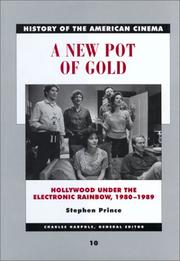
ISBN: 0520232666 Year: 2002 Publisher: Berkeley, Calif. University of California Press
Abstract | Keywords | Export | Availability | Bookmark
 Loading...
Loading...Choose an application
- Reference Manager
- EndNote
- RefWorks (Direct export to RefWorks)
Film --- anno 1980-1989 --- United States --- United States of America
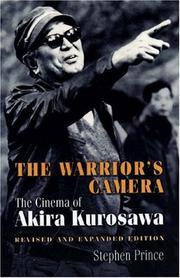
ISBN: 0691010463 Year: 1999 Publisher: Princeton, N.J. : Princeton University Press,
Abstract | Keywords | Export | Availability | Bookmark
 Loading...
Loading...Choose an application
- Reference Manager
- EndNote
- RefWorks (Direct export to RefWorks)
Kurosawa, Akira --- Kurosawa, Akira, --- Criticism and interpretation. --- Critique et interprétation --- Critique et interprétation
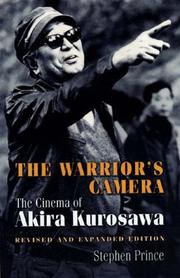
ISBN: 0691031606 0691008590 0691214182 Year: 1991 Publisher: Princeton Princeton university press
Abstract | Keywords | Export | Availability | Bookmark
 Loading...
Loading...Choose an application
- Reference Manager
- EndNote
- RefWorks (Direct export to RefWorks)
The Japanese film director Akira Kurosawa, who died at the age of 88, has been internationally acclaimed as a giant of world cinema. Rashomon, which won both the Venice Film Festival's grand prize and an Academy Award for best foreign-language film, helped ignite Western interest in the Japanese cinema. Seven Samurai and Yojimbo remain enormously popular both in Japan and abroad. In this newly revised and expanded edition of his study of Kurosawa's films, Stephen Prince provides two new chapters that examine Kurosawa's remaining films, placing him in the context of cinema history. Prince also discusses how Kurosawa furnished a template for some well-known Hollywood directors, including Martin Scorsese, Steven Spielberg, and George Lucas. Providing a new and comprehensive look at this master filmmaker, The Warrior's Camera probes the complex visual structure of Kurosawa's work. The book shows how Kurosawa attempted to symbolize on film a course of national development for post-war Japan, and it traces the ways that he tied his social visions to a dynamic system of visual and narrative forms. The author analyzes Kurosawa's entire career and places the films in context by drawing on the director's autobiography--a fascinating work that presents Kurosawa as a Kurosawa character and the story of his life as the kind of spiritual odyssey witnessed so often in his films. After examining the development of Kurosawa's visual style in his early work, The Warrior's Camera explains how he used this style in subsequent films to forge a politically committed model of filmmaking. It then demonstrates how the collapse of Kurosawa's efforts to participate as a filmmaker in the tasks of social reconstruction led to the very different cinematic style evident in his most recent films, works of pessimism that view the world as resistant to change.
791.44
---
J6839
---
J6800.80
---
Filmproductie. Filmindustrie
---
Japan: Media arts and entertainment -- cinema
---
Japan: Performing and media arts -- history -- Gendai (1926- ), Shōwa period, 20th century
---
Kurosawa, Akira
---
-Criticism and interpretation
---
791.44 Filmproductie. Filmindustrie
---
Kurosawa, Akira,
---
Heize, Ming,
---
Kurosava, Akira,
---
Kurōcāvā, Akirā,
---
黑沢明,
---
黑澤明,
---
黒沢明,
---
黒澤明,
---
Kūrūsāvā, Ākīrā,
---
کوروساوا، آکيرا,
---
Criticism and interpretation.
---
黑沢明
---
Film.
---
Cine
---
Producción y dirección
---
Kurosawa, Akira.
---
Crítica e interpretación.
---
Bibel
---
Japan.
---
American Western.
---
Ashikaga era.
---
Bakhtin, Mikhail.
---
Buddhism.
---
Chaplin, Charles.
---
Dersu Uzala.
---
Dodeskaden.
---
Drunken Angel.
---
Eisenstein, Sergei.
---
Godard, Jean-Luc.
---
Gorky, Maxim.
---
Hayasaka Fumio.
---
Hojoki.
---
Ikiru.
---
Kagemusha.
---
Leone, Sergio.
---
Madadayo.
---
Marxism.
---
Nakadai Tatsuya.
---
Neo-Confucianism.
---
Noh theater.
---
Oda Nobunaga.
---
Oguni Hideo.
---
Peckinpah, Sam.
---
Ran.
---
Red Beard.
---
Sengoku period.
---
Shimura Takashi.
---
Takeda Shingen.
---
Tokugawa period.
---
haiku.
---
individualism.
---
karma.
---
satori.
---
Philemonbrief
---
<
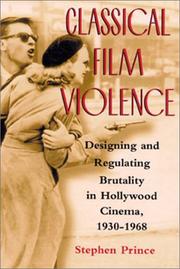
ISBN: 0813532809 0813532817 Year: 2003 Publisher: New Brunswick, N.J. : Rutgers University Press,
Abstract | Keywords | Export | Availability | Bookmark
 Loading...
Loading...Choose an application
- Reference Manager
- EndNote
- RefWorks (Direct export to RefWorks)
Motion pictures --- Violence in motion pictures. --- Censorship --- History. --- Violence au cinéma --- Cinéma --- Censure --- Histoire
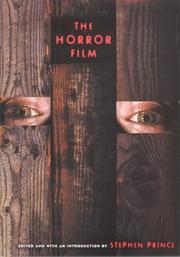
ISBN: 0813533627 0813533635 Publisher: Rutgers University Press
Abstract | Keywords | Export | Availability | Bookmark
 Loading...
Loading...Choose an application
- Reference Manager
- EndNote
- RefWorks (Direct export to RefWorks)
In this volume, Stephen Prince has collected essays reviewing the history of the horror film and the psychological reasons for its persistent appeal, as well as discussions of the developmental responses of young adult viewers and children to the genre. The book focuses on recent postmodern examples such as The Blair Witch Project. In a daring move, the volume also examines Holocaust films in relation to horror. Part One features essays on the silent and classical Hollywood eras. Part Two covers the postWorld War II era and discusses the historical, aesthetic, and psychological characteristics of contemporary horror films. In contrast to horror during the classical Hollywood period, contemporary horror features more graphic and prolonged visualizations of disturbing and horrific imagery, as well as other distinguishing characteristics. Princes introduction provides an overview of the genre, contextualizing the readings that follow.Stephen Prince is professor of communications at Virginia Tech. He has written many film books, including Classical Film Violence: Designing and Regulating Brutality in Hollywood Cinema, 19301968, and has edited Screening Violence, also in the Depth of Field Series.
Horror films --- Films d'horreur --- History and criticism. --- Histoire et critique --- Film --- Horror Films --- Performing Arts
Book
ISBN: 9780813596273 9780813596266 Year: 2019 Publisher: New Brunswick (N.J.) Rutgers University Press
Abstract | Keywords | Export | Availability | Bookmark
 Loading...
Loading...Choose an application
- Reference Manager
- EndNote
- RefWorks (Direct export to RefWorks)
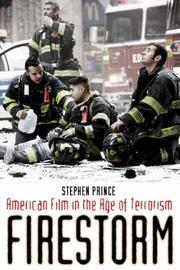
ISBN: 9780231148719 9780231148702 9780231520089 Year: 2009 Publisher: New York Columbia University Press
Abstract | Keywords | Export | Availability | Bookmark
 Loading...
Loading...Choose an application
- Reference Manager
- EndNote
- RefWorks (Direct export to RefWorks)
Motion pictures --- United States --- History --- 21st century --- September 11 terrorist attacks, 2001 --- Influence --- Political aspects --- Terrorism in motion pictures --- Psychic trauma in motion pictures --- War films --- History and criticism --- September 11 Terrorist Attacks, 2001 --- #SBIB:309H1320 --- 791.43 --- 9/11 --- eenentwintigste eeuw --- film --- filmgeschiedenis --- terrorisme --- Verenigde Staten --- Cinema --- Feature films --- Films --- Movies --- Moving-pictures --- Audio-visual materials --- Mass media --- Performing arts --- De filmische boodschap: algemene werken (met inbegrip van algemeen filmhistorische werken en filmhistorische werken per land) --- War films History and criticism

ISBN: 081356817X 0813535271 9780813535272 0813532809 9780813532806 0813532817 9780813532813 Year: 2003 Publisher: New Brunswick, N.J. Rutgers University Press
Abstract | Keywords | Export | Availability | Bookmark
 Loading...
Loading...Choose an application
- Reference Manager
- EndNote
- RefWorks (Direct export to RefWorks)
Violence in motion pictures. --- Motion pictures --- Violence in moving-pictures --- Censorship --- History.
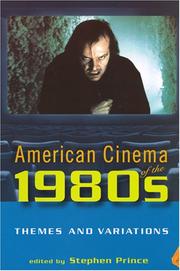
ISBN: 1281244244 1780347847 9786611244248 0813543029 9780813543024 6611244247 081354033X 9780813540337 0813540348 9780813540344 9781281244246 9781780347844 Year: 2007 Publisher: New Brunswick, N.J. Rutgers University Press
Abstract | Keywords | Export | Availability | Bookmark
 Loading...
Loading...Choose an application
- Reference Manager
- EndNote
- RefWorks (Direct export to RefWorks)
During the 1980's, American cinema underwent enormous transformations. Blockbusters like Raiders of the Lost Ark, E.T., and The Empire Strikes Back grabbed huge revenues for the studios. At the same time, the growth of home video led to new and creative opportunities for independent film production, resulting in many of the decade's best films. Both large- and small-scale filmmakers responded to the social, political, and cultural conditions of the time. The two-term presidency of Ronald Reagan spawned a new Cold War with the Soviet Union, which Hollywood film both embraced and critiqued. Also...
Motion pictures --- Plots, themes, etc. --- History --- History. --- Film --- anno 1980-1989 --- United States --- United States of America
Book
ISBN: 1784026697 1283864541 0813552184 9780813552187 9780813551852 0813551854 9780813551869 0813551862 9781784026691 9781283864541 Year: 2011 Publisher: New Brunswick, NJ
Abstract | Keywords | Export | Availability | Bookmark
 Loading...
Loading...Choose an application
- Reference Manager
- EndNote
- RefWorks (Direct export to RefWorks)
Avatar. Inception. Jurassic Park. Lord of the Rings. Ratatouille. Not only are these some of the highest-grossing films of all time, they are also prime examples of how digital visual effects have transformed Hollywood filmmaking. Some critics, however, fear that this digital revolution marks a radical break with cinematic tradition, heralding the death of serious realistic movies in favor of computer-generated pure spectacle. Digital Visual Effects in Cinema counters this alarmist reading, by showing how digital effects–driven films should be understood as a continuation of the narrative and stylistic traditions that have defined American cinema for decades. Stephen Prince argues for an understanding of digital technologies as an expanded toolbox, available to enhance both realist films and cinematic fantasies. He offers a detailed exploration of each of these tools, from lighting technologies to image capture to stereoscopic 3D. Integrating aesthetic, historical, and theoretical analyses of digital visual effects, Digital Visual Effects in Cinema is an essential guide for understanding movie-making today.
Cinematography --- Digital cinematography. --- Motion pictures --- Motion picture industry --- Photography --- Chronophotography --- Special effects (Cinematography) --- Trick cinematography --- Digital filmmaking --- Digital moviemaking --- Aesthetics --- Film industry (Motion pictures) --- Moving-picture industry --- Cultural industries --- Technological innovations. --- Special effects. --- Aesthetics. --- Animated pictures --- Special effects --- Digital techniques --- Cinéma --- Cinéma numérique --- Industrie --- Innovations --- Esthétique --- Effets spéciaux
| Listing 1 - 10 of 30 | << page >> |
Sort by
|

 Search
Search Feedback
Feedback About UniCat
About UniCat  Help
Help News
News